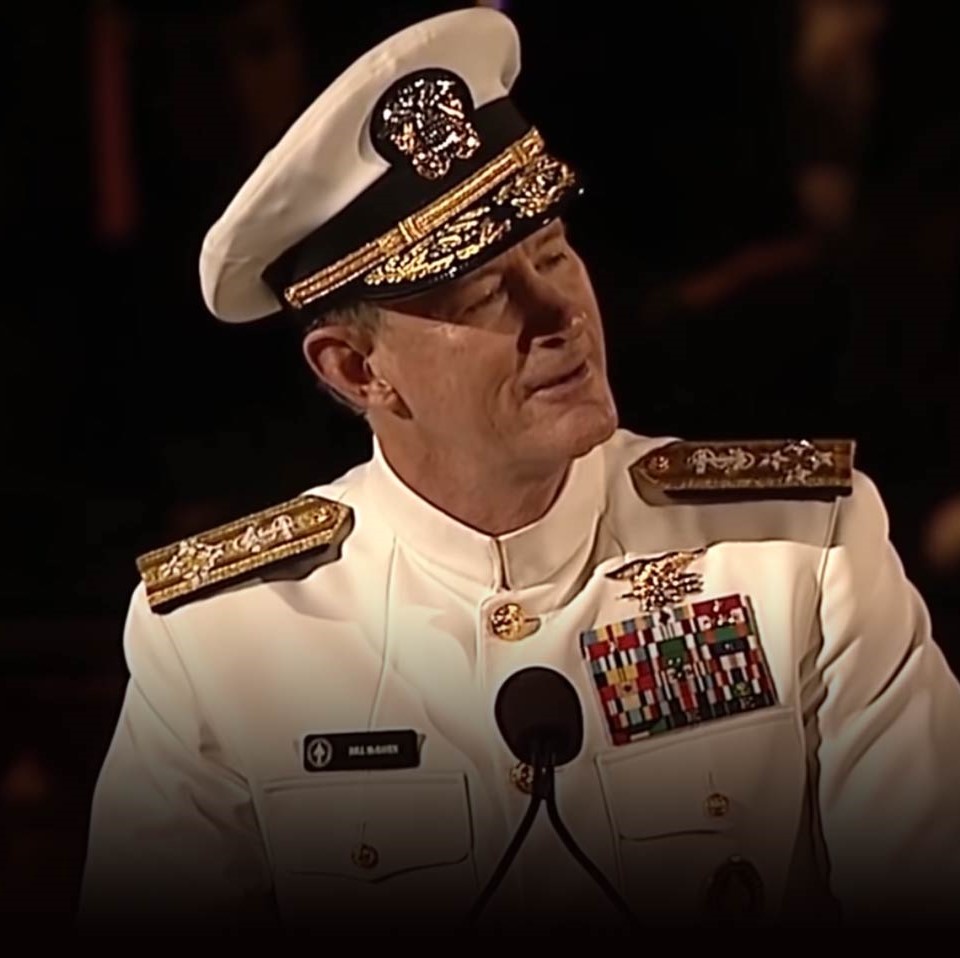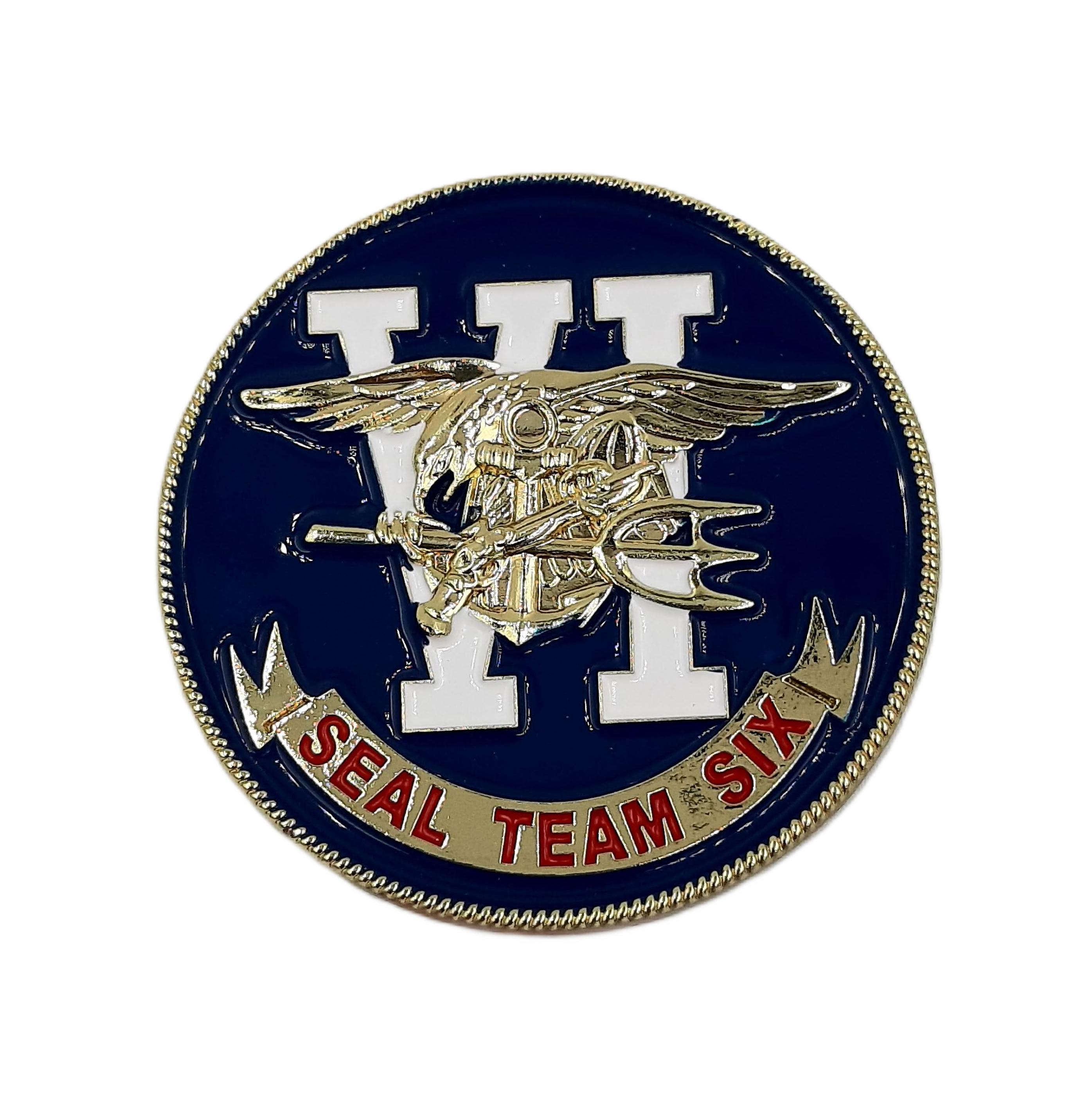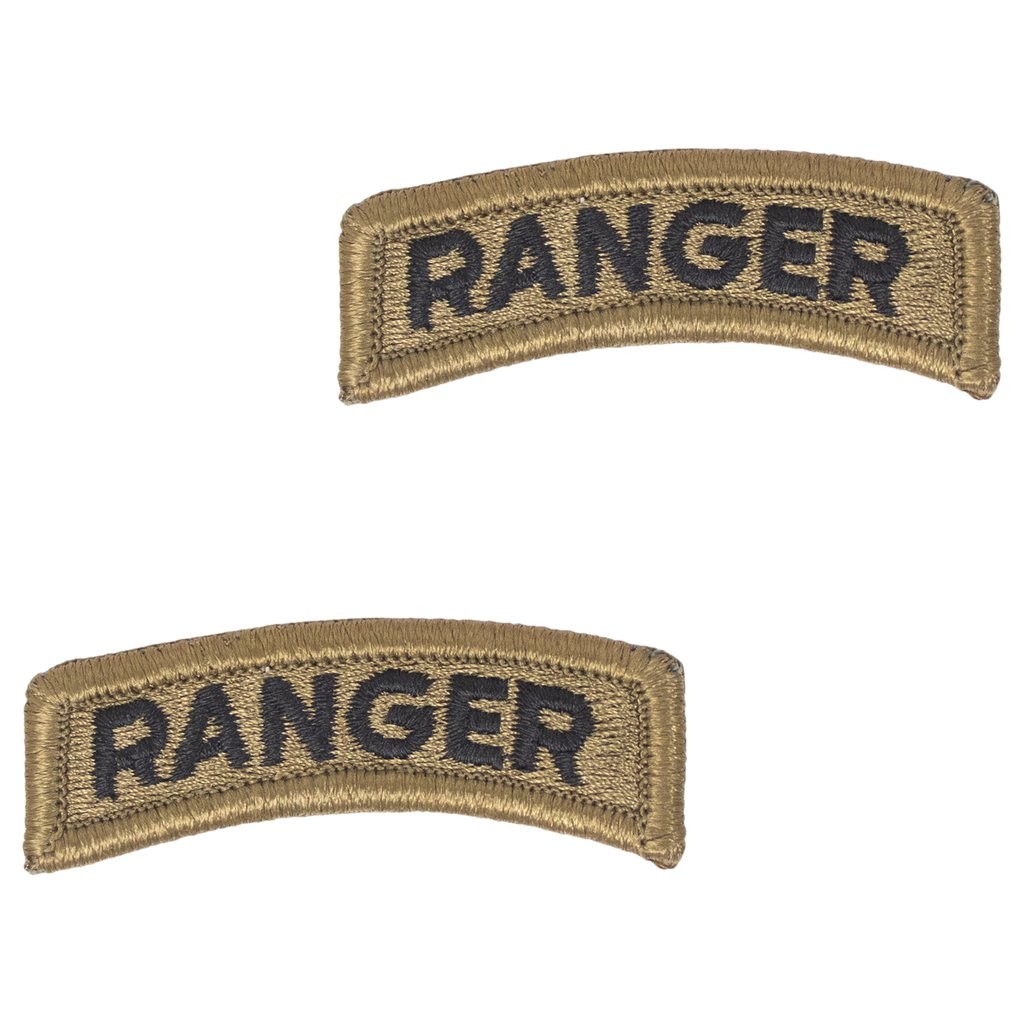“Molon Labe” is an exhortation that never loses its relevance. Its message can be summarized in two words: fight and...
- There are no more items in your cart
- Shipping
- Total zł0.00

ADMIRAL WILLIAM MCRAVEN SPEECH part. 2
Part 2.
6. At least twice a week, the trainees were required to run the obstacle course. The obstacle course contained 25 obstacles including a 10-foot high wall, a 30-foot cargo net and a barbed wire crawl, to name a few. But the most challenging obstacle was the slide for life. It had a three-level 30-foot tower at one end and a one-level tower at the other. In between was a 200-foot-long rope. You had to climb the three-tiered tower and once at the top, you grabbed the rope, swung underneath the rope and pulled yourself hand over hand until you got to the other end.
The record for the obstacle course had stood for years when my class began training in 1977. The record seemed unbeatable, until one day, a student decided to go down the slide for life head first. Instead of swinging his body underneath the rope and inching his way down, he bravely mounted the TOP of the rope and thrust himself forward.
It was a dangerous move — seemingly foolish, and fraught with risk. Failure could mean injury and being dropped from the training. Without hesitation the student slid down the rope perilously fast. Instead of several minutes, it only took him half that time and by the end of the course he had broken the record.
If you want to change the world sometimes you have to slide down the obstacle head first.
7. During the land warfare phase of training, the students are flown out to San Clemente Island which lies off the coast of San Diego. The waters off San Clemente are a breeding ground for the great white sharks. To pass SEAL training there are a series of long swims that must be completed. One is the night swim.
Before the swim the instructors joyfully brief the trainees on all the species of sharks that inhabit the waters off San Clemente. They assure you, however, that no student has ever been eaten by a shark — at least not recently. But, you are also taught that if a shark begins to circle your position — stand your ground. Do not swim away. Do not act afraid. And if the shark, hungry for a midnight snack, darts towards you — then summon up all your strength and punch him in the snout, and he will turn and swim away.
There are a lot of sharks in the world. If you hope to complete the swim you will have to deal with them.
So, if you want to change the world, don’t back down from the sharks.
8. As Navy SEALs one of our jobs is to conduct underwater attacks against enemy shipping. We practiced this technique extensively during basic training. The ship attack mission is where a pair of SEAL divers is dropped off outside an enemy harbor and then swims well over two miles — underwater — using nothing but a depth gauge and a compass to get to their target.
During the entire swim, even well below the surface, there is some light that comes through. It is comforting to know that there is open water above you. But as you approach the ship, which is tied to a pier, the light begins to fade. The steel structure of the ship blocks the moonlight, it blocks the surrounding street lamps, it blocks all ambient light.
To be successful in your mission, you have to swim under the ship and find the keel — the centerline and the deepest part of the ship. This is your objective. But the keel is also the darkest part of the ship — where you cannot see your hand in front of your face, where the noise from the ship’s machinery is deafening and where it is easy to get disoriented and fail.
Every SEAL knows that under the keel, at the darkest moment of the mission, is the time when you must be calm, composed — when all your tactical skills, your physical power and all your inner strength must be brought to bear.
If you want to change the world, you must be your very best in the darkest moment.
9. The ninth week of training is referred to as “Hell Week.” It is six days of no sleep, constant physical and mental harassment, and one special day at the Mud Flats. The Mud Flats are area between San Diego and Tijuana where the water runs off and creates the Tijuana slues, a swampy patch of terrain where the mud will engulf you.
It is on Wednesday of Hell Week that you paddle down to the mud flats and spend the next 15 hours trying to survive the freezing cold mud, the howling wind and the incessant pressure to quit from the instructors. As the sun began to set that Wednesday evening, my training class, having committed some “egregious infraction of the rules” was ordered into the mud.
The mud consumed each man till there was nothing visible but our heads. The instructors told us we could leave the mud if only five men would quit — just five men — and we could get out of the oppressive cold. Looking around the mud flat it was apparent that some students were about to give up. It was still over eight hours till the sun came up — eight more hours of bone-chilling cold.
The chattering teeth and shivering moans of the trainees were so loud it was hard to hear anything. And then, one voice began to echo through the night, one voice raised in song. The song was terribly out of tune, but sung with great enthusiasm. One voice became two and two became three and before long everyone in the class was singing. We knew that if one man could rise above the misery then others could as well.
The instructors threatened us with more time in the mud if we kept up the singingbut the singing persisted. And somehow the mud seemed a little warmer, the wind a little tamer and the dawn not so far away.
If I have learned anything in my time traveling the world, it is the power of hope. The power of one person — Washington, Lincoln, King, Mandela and even a young girl from Pakistan, Malala — one person can change the world by giving people hope.
So, if you want to change the world, start singing when you’re up to your neck in mud.
10. Finally, in SEAL training there is a bell. A brass bell that hangs in the center of the compound for all the students to see. All you have to do to quit is ring the bell.
Ring the bell and you no longer have to wake up at 5 o’clock. Ring the bell and you no longer have to do the freezing cold swims. Ring the bell and you no longer have to do the runs, the obstacle course, the PT — and you no longer have to endure the hardships of training. Just ring the bell.
If you want to change the world don’t ever, ever ring the bell.
Source: The University of Texas at Austin
Admiral McRaven addresses the University of Texas at Austin Class of 2014



















Leave a comment